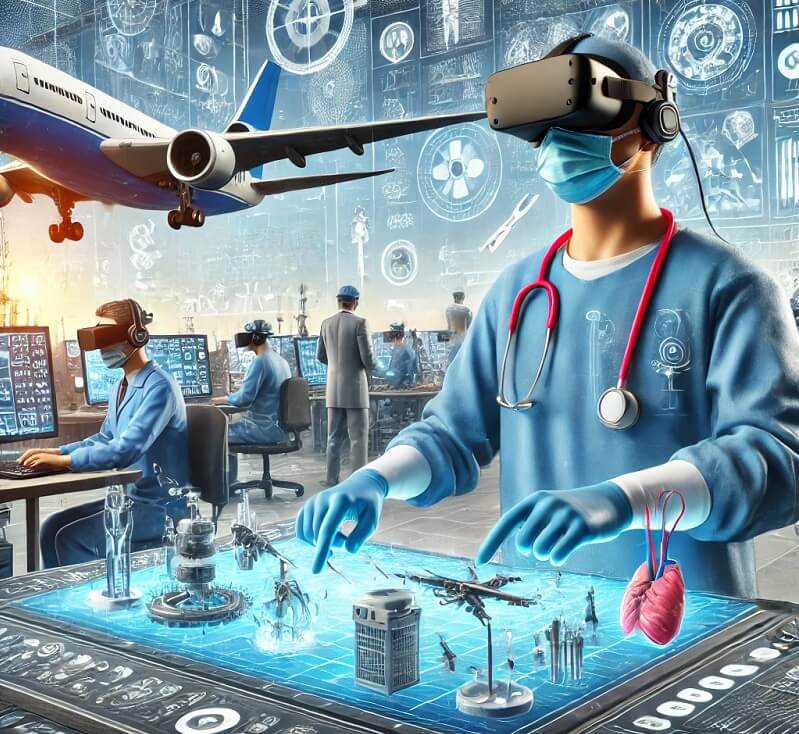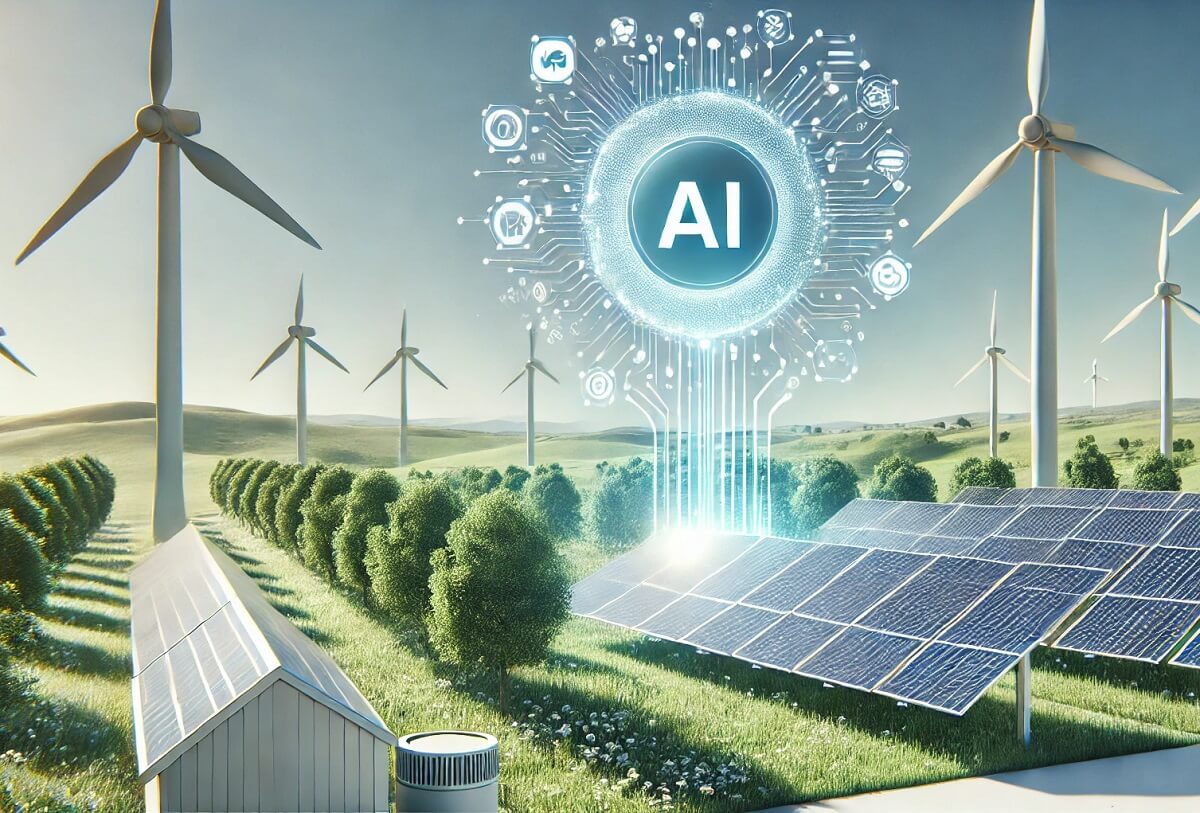As we look ahead to 2024, technology continues to push boundaries and redefine both business and daily life. From the rise of artificial intelligence (AI) to advances in wearable devices, the trends emerging this year are poised to transform how we interact with the world. These innovations are not just incremental improvements; they mark fundamental shifts in how industries operate, people communicate, and technology integrates with society.
In this article, we will explore five key tech trends set to define 2024: Generative AI, Extended Reality (XR), Sustainable Technologies, Smart Wearables, and Quantum Computing. Each of these technologies is at the forefront of shaping the next decade, and their influence will only grow stronger.
#1. Generative AI: Redefining Creativity and Security
The prominence of Generative AI has exploded in the last few years, but 2024 will be the year where this technology matures into a vital tool across industries. While it initially made headlines for its ability to create realistic images, text, and even entire video sequences, Generative AI has moved far beyond being just a creative tool. Today, it’s a key player in areas like cybersecurity and operational efficiency.

Generative AI can automate the analysis of vast datasets, allowing businesses to detect unusual patterns and prevent cyberattacks. By integrating AI systems into cybersecurity frameworks, companies can fend off increasingly sophisticated threats. AI’s capability to analyze behavioral patterns, create defense mechanisms, and alert cybersecurity teams to anomalies has made it an indispensable tool. According to Deloitte, 35% of Chief Information Security Officers (CISOs) already use AI in their cybersecurity strategies (Oxford Global Resources)(Home of Technology News).
But it’s not just about defense. Generative AI is enhancing creativity and productivity across industries. From content marketing to film production, AI-generated content saves companies time while creating high-quality output. In 2024, expect to see even more AI-powered platforms that assist with writing, video editing, design, and more. As Forbes highlights, AI has the power to boost business efficiency and productivity while offering creative freedom (Oxford Global Resources).
Key Takeaway: Generative AI is no longer just a novelty. It’s becoming an integral part of cybersecurity, business automation, and content creation, offering solutions that increase efficiency while safeguarding sensitive data.
#2. Extended Reality (XR): Training, Entertainment, and Beyond
Extended Reality (XR), which includes Virtual Reality (VR), Augmented Reality (AR), and Mixed Reality (MR), continues to expand its influence across industries. Initially popular in gaming and entertainment, XR is now being adopted in sectors such as healthcare, education, and manufacturing. In 2024, XR technologies will offer more immersive and practical applications that enhance everything from employee training to product design.
One of XR’s most valuable uses lies in training. Industries like aviation, healthcare, and construction can leverage VR and AR to simulate real-world environments without the associated risks or costs. For example, medical professionals can now practice surgeries in virtual environments, reducing errors in the real world. Similarly, pilots undergo realistic flight simulations, and engineers can visualize infrastructure projects before a single brick is laid.

This year will also see the continued development of the industrial metaverse, a space where digital twins—virtual replicas of physical systems—help companies monitor, manage, and improve their operations. These digital twins allow businesses to simulate real-world processes, enabling them to analyze and optimize systems in real-time. According to Deloitte, the growing importance of spatial technologies plays a key role in helping organizations gain insights that were previously impossible, especially when simulating complex environments(Deloitte United States).
Additionally, XR will be more visible in retail and e-commerce, where augmented reality allows consumers to “try before they buy,” enhancing the shopping experience. Imagine seeing how a piece of furniture will look in your living room or testing how makeup products appear on your skin—all without stepping foot in a store.
Key Takeaway: XR is far beyond gaming and entertainment. Its real-world applications in training, simulation, and design make it a powerful tool across various environments for learning and creativity. Explore the possibilities of XR.
#3. Sustainable Technologies: The Future of Green Tech
Sustainability is no longer optional. As the effects of climate change become increasingly severe, companies are increasingly adopting green technologies to minimize their environmental footprint. In 2024, innovations that improve energy efficiency and reduce e-waste are set to dominate the tech landscape. From climate-neutral data centers to low-energy AI models, green tech is not merely a trend—it’s the future of responsible innovation. According to Earth.org, e-waste is expected to grow exponentially, with only 17.4% of electronic waste being recycled in the United States. In response, tech companies are adopting stricter measures to mitigate the environmental impact of their products. By 2030, many sustainability pledges will likely require data centers to operate without contributing to greenhouse gas emissions, significantly reducing the tech industry’s global carbon footprint.

Additionally, AI is becoming a part of the sustainability solution. Companies are developing smaller, more energy-efficient AI models that consume less power while maintaining high accuracy. These models aim to “right-size” AI by focusing on specific tasks and using fewer resources, thus contributing to reduced energy consumption (Oxford Global Resources)(Home of Technology News).
Key Takeaway: Sustainable tech isn’t just about creating eco-friendly gadgets; it’s about rethinking the entire lifecycle of tech products, from design to disposal. Expect companies to prioritize energy-efficient solutions and push for climate-neutral technologies.
#4. Smart Wearables: The Age of the Smart Ring
Wearable technology is evolving, and smart rings are the new frontier. In 2024, we can expect a surge in these compact devices that offer similar functionalities to smartwatches but in a sleeker, more subtle form. The ability to monitor health metrics like heart rate, sleep patterns, and even glucose levels makes these rings highly attractive to consumers looking for discreet yet powerful health tools.

Unlike bulkier smartwatches, smart rings are designed for continuous wear, making them perfect for round-the-clock health monitoring. Brands like Oura and Samsung are at the forefront of this trend, developing rings that not only track vital health metrics such as heart rate and sleep patterns but also serve as controllers for smart devices. Imagine adjusting your home’s thermostat or navigating a presentation with just a subtle gesture from your finger. These compact wearables offer both health insights and convenient smart home control, merging functionality with style(
CES 2024 unveiled the next generation of smart rings, which are expected to launch later this year. While the primary focus remains on health tracking—such as monitoring heart rate, sleep patterns, and activity levels—the potential applications for these devices are expanding rapidly. As smart rings gain popularity, we can anticipate a surge in new functionalities, ranging from fitness monitoring to enhanced smart device controls. This evolution will likely drive more diverse uses, making smart rings an indispensable tool for both health and lifestyle management.
Key Takeaway: Smart rings are the next evolution in wearables, offering discreet, continuous health tracking and functionality without sacrificing style or convenience.
#5. Quantum Computing: Securing the Future of Data
Quantum computing is one of the most thrilling and complex technological trends to watch in 2024. While fully functional quantum computers are still in development, this year will mark significant strides in post-quantum cryptography and quantum networking. These advancements are vital for securing data in a future where quantum machines could potentially break today’s encryption methods.
One of the most critical applications of quantum technology lies in encryption. As quantum computers advance, traditional cryptographic techniques may become vulnerable to being easily cracked. This has led to a race toward post-quantum cryptography (PQC), an emerging field dedicated to creating encryption methods resistant to quantum attacks. In 2024, we expect to see more organizations, both governmental and corporate, adopting PQC technologies, along with increased investment in quantum networking systems.
Beyond security, quantum computing holds the potential to revolutionize various industries, including pharmaceuticals, where it could be used to simulate complex molecular structures. This capability can expedite drug discovery processes and lead to breakthroughs that are currently unachievable with classical computing.
Key Takeaway: While quantum computing has yet to reach mainstream application, its implications for data security, drug discovery, and complex problem-solving are profound. Companies and governments alike are preparing for a post-quantum world by investing in cryptography and quantum-based technologies today.
Conclusion: The Future is Now
The year 2024 is set to usher in a wave of transformative technologies. From the seamless integration of AI into everyday business operations to the surge in popularity of smart wearables, the advances in quantum computing, and the ongoing efforts toward sustainability, the impact will be felt across industries and society. These trends mark significant shifts in how we interact with technology, paving the way for a more efficient, secure, and connected world.
As businesses and consumers brace for this next era of innovation, those who embrace these changes early will find themselves at the forefront of a rapidly evolving digital landscape. The future is not just on the horizon—it’s already here, and it is reshaping the way we live and work.
Explore the future of technology through the lens of key trends:
- Generative AI
- Extended Reality (XR)
- Sustainable Technologies
- Smart Wearables
- Quantum Computing
By staying ahead of these developments, organizations and individuals can thrive in a tech-driven world where change is the only constant.


































